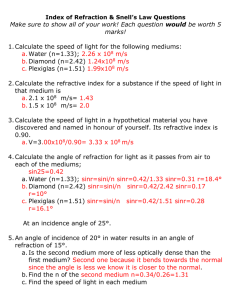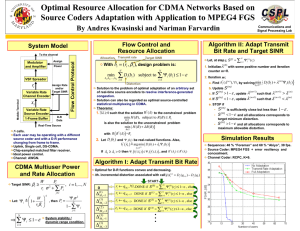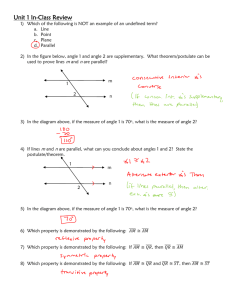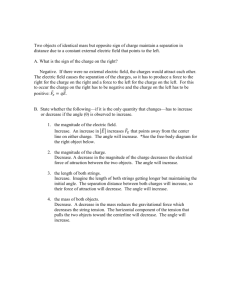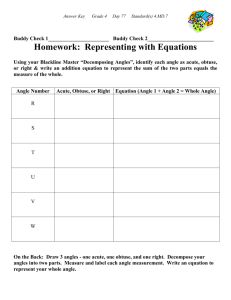HW3
advertisement
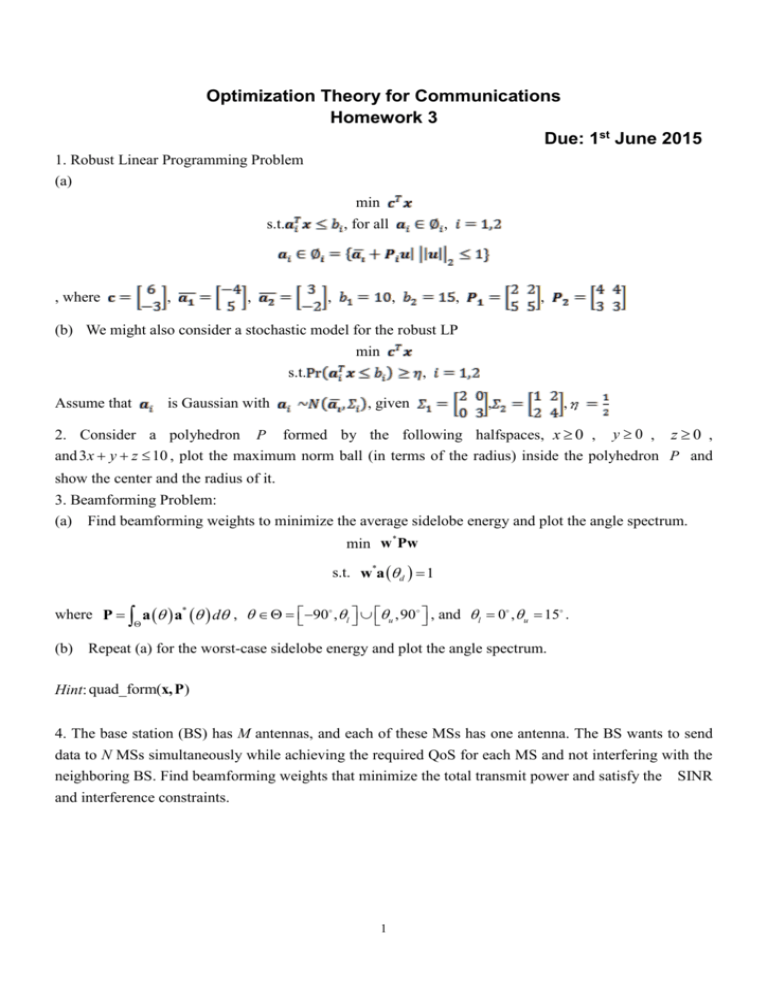
Optimization Theory for Communications Homework 3 Due: 1st June 2015 1. Robust Linear Programming Problem (a) min , for all s.t. , where , , , , , , , (b) We might also consider a stochastic model for the robust LP min s.t. Assume that is Gaussian with , , given , , 2. Consider a polyhedron P formed by the following halfspaces, x 0 , y 0 , z 0 , and 3x y z 10 , plot the maximum norm ball (in terms of the radius) inside the polyhedron P and show the center and the radius of it. 3. Beamforming Problem: (a) Find beamforming weights to minimize the average sidelobe energy and plot the angle spectrum. min w *Pw s.t. w*a d 1 where P a a* d , 90 , l u ,90 , and l 0 , u 15 . (b) Repeat (a) for the worst-case sidelobe energy and plot the angle spectrum. Hint: quad_form(x, P) 4. The base station (BS) has M antennas, and each of these MSs has one antenna. The BS wants to send data to N MSs simultaneously while achieving the required QoS for each MS and not interfering with the neighboring BS. Find beamforming weights that minimize the total transmit power and satisfy the SINR and interference constraints. 1 min i1 wi n s.t. hTi w i 2 2 2 hTi w j i2 2 0 , i 1, ,N j i h w T 0 2 j I0 i Assume M 8 , n 2 , MSs angle = [40 , 50 ] , the direction of the neighboring BS = 0 , noise i2 0.01 , SINR=10 dB, INR (Interference-to-noise ratio) = -20dB. Hint: norm(X,'fro') is the Frobenius norm, sqrt(sum(diag(X'*X))) A x b, y == complex_lorentz m : second-order cone (or A x b, y <In> complex_lorentz m ) (a) Plot the angle spectrum and give comments. (b) Repeat (a) when n 4 , MSs angle= [78 , 23 , 10 , 25 ] , and compare with (a). (c) Describe what you observe for beamforming weights and angle spectrum when the SINR requirement increases. (d) Describe what you observe for beamforming weights and angle spectrum when the noise power decreases. 5. Consider an optimal power allocation problem with three users, as shown in the following figure. 2 Where user1~3 intend to communication with BS1~3, respectively, but each of them is interfered by others. Define pi as the transmitted power for ith user, Gi j is the channel gain from the jth BS to the ith user, and i2 is the noise power at the ith user. So, the signal-to-interference plus noise ratio (SINR) at the ith user is defined by i Gii pi Gi j p j i2 j i 0.02 0.1 1 Assume that G 0.5 1 0.06 , i2 0.01, Pmax,i 10, i 1 3 . 0.02 0.04 1 (a) Consider the worst case design, and apply geometric programming (GP) to find the total required transmit power and the SINR at each user. (Please refer to lecture 4, page 12.) (Note that please rewrite the associated GP problem to a convex form, and run the convex problem by the cvx tool.) (b) Minimize the total transmit power, subject to all the users’ SINRs 0 10 dB . Please find the total required transmit power and the SINR at each user. (Please refer to lecture 3, page 22.) (c) In (a), the quasi-convex problem is caused by the worst case design; therefore, please apply 6. “bisection method ” to find the optimal total required transmit power and the SINR at each user, and give comments on the results from GP and bisection method. FIR Design Problem: 2 exp Give a specified Gaussian filter with frequency coefficients H spec , 2 2 2 2 1 where ; 2 0.05 ; 0 , with group delay 10 (i.e., the filter has linear phase with 2 3 e j10 ). Please use FIR filter: L 1 Impulse response: h n hk x n k k 0 L 1 Frequency response: H hk e j k where L : the number of FIP taps k 0 to find the filter coefficients which satisfy the specification. Here, please adopt the worst-case design criterion to minimize the absolute error between the desired and the actual channel frequency response: min max H H spec 0, (a) When L 20 , please show the impulse, magnitude, phase response of the designed filter and compare with the specification. (b) As L increases, what do you observe? 7. Robust Least-square Problem: Consider a standard LS min Ax b x 2 1 2 5 With uncertainty A Ω A U U 2 , where we assume A , b , 0.01 . 3 4 6 Please adopt worst-case design ( i.e., Robust LS problem formulation) to find the optimal value and x . <General Information> deliverables for this project include: Simulation results a paragraph summarizing your observations and any conclusions you can draw from this source code bonus points for any extra plots with meaningful explanation and conclusion. <Notice> Report and codes sent to the email:bmclab214@gmail.com File : ID_name.rar ex: 965403001_王小明.rar Email title: ID_name_CVXHW3 ex: 965403001_王小明_CVXHW3 Also, submit its hard version to the TAs at E1-214 before deadline. <Reference> MATLAB cvx package http://cvxr.com/cvx/download Homework package http://www.ce.ncu.edu.tw/~mlku/course.html 4
